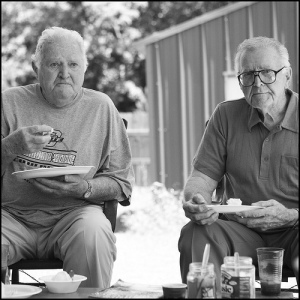We know that California assisted-living facilities need to be better regulated by the state. After all, many of the serious and life-threatening injuries sustained by patients in nursing homes and residential care facilities for the elderly (RCFEs) are preventable. But what happens when similar incidents of elder neglect occur at home? According to a recent article in The Atlantic, there’s a significant regulation problem—lack of regulation, to be precise—with California’s in-home supportive services (IHSS) program.
As the article explains, this program “pays people to look after seniors,” but without sufficient regulation, many older adults end up sustaining severe injuries as a direct result of elder abuse and neglect.
State-Funded Care at Home
What is the in-home supportive services program? As the California Department of Social Services explains, it helps to pay for services provided to seniors so that they can “remain safely in [their] own home.” In order to be eligible based on age, you must be over the age of 65. The program also provides services to certain disabled persons. As the Department emphasizes, it’s an “alternative to out-of-home care, such as nursing homes or board and care facilities.”
What kinds of services will the state pay for? The type of care that elderly residents receive through IHSS looks a lot more like the kind of care provided in RCFEs. For example, IHSS services can include housekeeping, meal preparation, and personal care assistance. Services authorized through IHSS do not include, for instance, any kind of medical services.
Why does the state pay for such services? According to the article in The Atlantic, it “saves the government money.” At the same time, though, it “offers many people a greater sense of comfort and autonomy than life in an institution.” But if the caregivers who provide services through this program aren’t properly trained, the elderly people who use these services could be at serious risk of injuries from neglect. To be sure, these “caregivers are largely untrained and unsupervised, even when paid by the state, leaving thousands of residents at risk of possible abuse, neglect, and poor treatment.”
Rise in Publicly Funded Caregiver Programs
California’s creation of the IHSS program isn’t specific to the state. Indeed, many states across the country have turned to publicly funded caregiver programs. Residents’ use of these services in California, however, ranks among the highest in the country. It’s a 7 billion dollar program, and its caseload has reached nearly half a million since 2001.
Most of the caregivers work for low pay, however (approximately $10 per hour), and they don’t receive much scrutiny from the organizations that monitor nursing homes and other facilities in the state. Based on information from police departments and court records, these caregivers’ in-home lapses “lead to preventable injuries and death.” To be sure, caregivers aren’t even required to learn CPR or basic first-aid techniques, let alone methods for addressing other specific needs of California’s elderly population.
While in-home programs might seem preferable to older adults and their family members, they can come with serious risks of elder abuse and neglect. If you suspect that your elderly parent or loved one has been abused or neglected, you should contact an experienced San Diego elder abuse attorney as soon as possible.
Photo Credit: Ⅿeagan via Compfight cc
See Related Blog Posts:
 Southern California Nursing Home Abuse Lawyer Blog
Southern California Nursing Home Abuse Lawyer Blog









